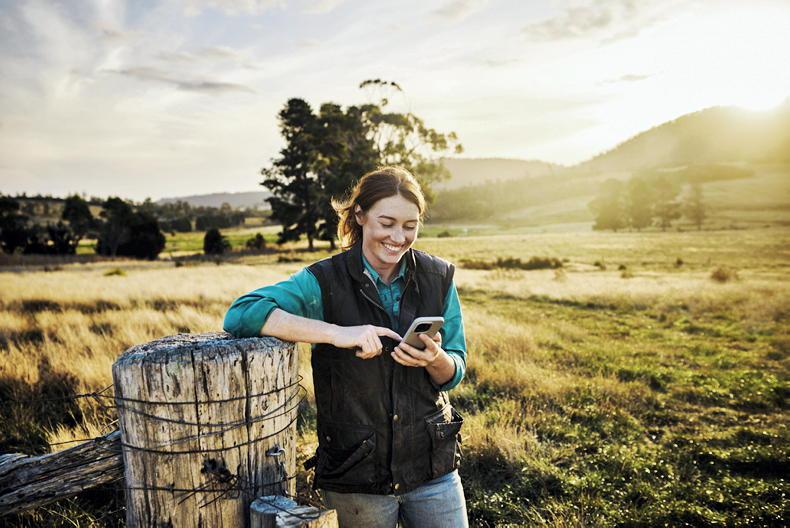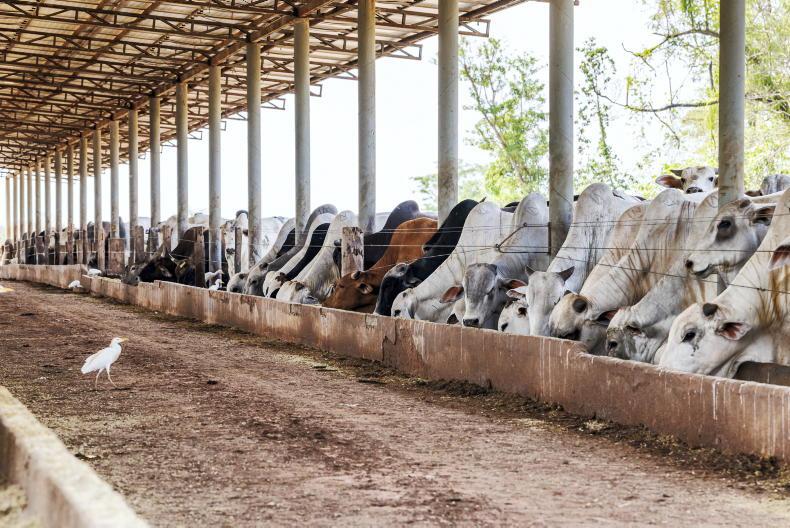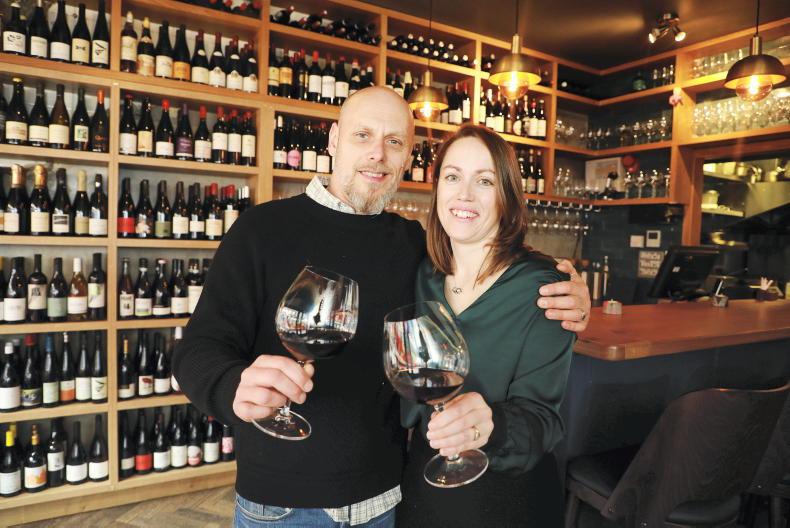History, natural beauty and peaceful settings make Irish farms ideal for creating sustainable tourism experiences. So, if you have aspirations for starting an agri-tourism business in 2023, where do you begin? Fáilte Ireland says there are numerous opportunities for agri-tourism development throughout the country.
The organisation says: “Both domestic and international tourists are attracted by unique and compelling experiences that give them the opportunity to immerse themselves actively in the locality, interacting with people, engaging the senses and learning the history, culture and stories of a destination.
“Agri-tourism experiences and activities, such as farm tours, farm-to-fork expereinces, forest bathing and thoroughbred experiences have become increasingly popular with visitors in the last number of years,” according to Fáilte Ireland.
On-trend offerings
Visitors to rural Ireland aren’t just looking for a trip – they are looking for an experience. When it comes to accommodation, research from hotel management software company Cloudbeds says today’s visitors are happy to trade amenities for something more experiential.
In their recent study, ‘Five key trends to shape the hospitality industry in 2023’, they list, “a shift from amenities to experiences” as becoming increasingly important to visitors. “A focus on value-driven travel” also made their top-five predictions, which makes sense given the cost of living increases we have seen worldwide in the past year.
“As travellers increasingly seek unique experiences out of their travel, they are less likely to choose accommodations based on traditional amenities [for example, a TV, robes or room service], but rather on what the accommodation can provide as an experience they couldn’t get elsewhere,” explains Nancy Huang, director of marketing communications at Cloudbeds.
“For rural destinations, that could mean promoting the opportunity for travellers to spend the day working on a farm, or cooking and enjoying a meal from farm-fresh produce, or learning ‘survival skills’, like building a fire or foraging for food.”
However, while visitors may be willing to skimp on luxury amenities, there is one they absolutely can’t do without. “WiFi,” Nancy states. “Travellers may desire to be more ‘off-grid’ in their vacations, but more than half of them said they would absolutely need their phone and a stable internet connection.”
Growing interest
According to Teagasc, there is growing interest in agri-tourism and accommodation among farmers as a means of farm diversification. However, a realistic approach is essential: if you think agri-accommodation could be a form of passive income, think again. Depending on your investment, an agri-tourism enterprise can require large amounts of work, and profit might not be as high as expected.
That said, there is plenty of opportunity out there for those willing to put the work in. Teagasc’s energy and rural development specialist, Barry Caslin, tells Irish Country Living that integrating agri-tourism projects into an existing farm enterprise can work really well.
“Although sites in honey-pot tourist areas and close to a natural attraction [like a well-known beach] will have a high footfall, many successful sites exist outside traditional holiday destinations,” he says. “In some instances, being away from the conventional tourist trail can be a selling point because campers and glampers are looking for space and seclusion in the outdoors.”
When it comes to on-farm accommodation, Barry says proximity to the main house and its connections to power, water and drainage is important. Costs, disruption, and time taken for the project will rise proportionately for each metre away from connection points.
“Like any business, if it’s carefully planned and managed it will generate an income,” he adds.
What works for your farm?
We see interesting examples of agri-accommodation all over Ireland, from luxury yurts to simple campsites or restored castles and cottages, which can be rented out as Airbnbs. The key is to invest in an accommodation type which best suits your landscape and, if you’re living on a working farm, your enterprise.
“Glamping can add value to your farm business, provide an additional income stream, and contribute to the local economy,” Barry says, as an example. “Glamping pods, wigwams and yurts come in various shapes, sizes, specifications and interior furnishings.”
Setup costs
Basic glamping pods start at around €4,000 to €10,000 each, while advanced models featuring ensuite bathrooms and underfloor heating will range from €15,000 to €30,000. For wigwams, you’re looking at a range of €8,000 to €25,000. Yurts also vary in size, shape and cost; starting at around €5,000 per 10ft yurt and going up to €45,000 for a top-of-the-range 40ft model.
“It is estimated that the maintenance of pods, wigwams and yurts will cost around 5% to 10% of the capital value per annum,” Barry says. “Many glamping pods can be purchased and delivered fully built; simply lifted off a transporter and placed on to your chosen site.”
Other preparations need to be made, as well. Groundwork needed for glamping sites can vary according to accommodation type, so it is advised to liaise with the supplier on this. Electricity supply, suitable drainage, water supply and sewage must also be provided.
Training and information available
If you want to learn more, Teagasc is organising an agri-tourism event with the Irish Self Catering Federation on 10 March. The event will take place at Teagasc Ashtown and will address the key questions most farmers have around getting started with agri-tourism and accommodation (including planning permission, business planning, sustainability, available grants and marketing, among other topics). The details of the event are being finalised and will be advertised in the coming weeks.
For more information, see teagasc.ie/rural-economy/rural-development/diversification/rural-development-factsheets
Read more
Doing business from Mayo to mainland China
€300,000 awarded to 19 local agri-food tourism projects
History, natural beauty and peaceful settings make Irish farms ideal for creating sustainable tourism experiences. So, if you have aspirations for starting an agri-tourism business in 2023, where do you begin? Fáilte Ireland says there are numerous opportunities for agri-tourism development throughout the country.
The organisation says: “Both domestic and international tourists are attracted by unique and compelling experiences that give them the opportunity to immerse themselves actively in the locality, interacting with people, engaging the senses and learning the history, culture and stories of a destination.
“Agri-tourism experiences and activities, such as farm tours, farm-to-fork expereinces, forest bathing and thoroughbred experiences have become increasingly popular with visitors in the last number of years,” according to Fáilte Ireland.
On-trend offerings
Visitors to rural Ireland aren’t just looking for a trip – they are looking for an experience. When it comes to accommodation, research from hotel management software company Cloudbeds says today’s visitors are happy to trade amenities for something more experiential.
In their recent study, ‘Five key trends to shape the hospitality industry in 2023’, they list, “a shift from amenities to experiences” as becoming increasingly important to visitors. “A focus on value-driven travel” also made their top-five predictions, which makes sense given the cost of living increases we have seen worldwide in the past year.
“As travellers increasingly seek unique experiences out of their travel, they are less likely to choose accommodations based on traditional amenities [for example, a TV, robes or room service], but rather on what the accommodation can provide as an experience they couldn’t get elsewhere,” explains Nancy Huang, director of marketing communications at Cloudbeds.
“For rural destinations, that could mean promoting the opportunity for travellers to spend the day working on a farm, or cooking and enjoying a meal from farm-fresh produce, or learning ‘survival skills’, like building a fire or foraging for food.”
However, while visitors may be willing to skimp on luxury amenities, there is one they absolutely can’t do without. “WiFi,” Nancy states. “Travellers may desire to be more ‘off-grid’ in their vacations, but more than half of them said they would absolutely need their phone and a stable internet connection.”
Growing interest
According to Teagasc, there is growing interest in agri-tourism and accommodation among farmers as a means of farm diversification. However, a realistic approach is essential: if you think agri-accommodation could be a form of passive income, think again. Depending on your investment, an agri-tourism enterprise can require large amounts of work, and profit might not be as high as expected.
That said, there is plenty of opportunity out there for those willing to put the work in. Teagasc’s energy and rural development specialist, Barry Caslin, tells Irish Country Living that integrating agri-tourism projects into an existing farm enterprise can work really well.
“Although sites in honey-pot tourist areas and close to a natural attraction [like a well-known beach] will have a high footfall, many successful sites exist outside traditional holiday destinations,” he says. “In some instances, being away from the conventional tourist trail can be a selling point because campers and glampers are looking for space and seclusion in the outdoors.”
When it comes to on-farm accommodation, Barry says proximity to the main house and its connections to power, water and drainage is important. Costs, disruption, and time taken for the project will rise proportionately for each metre away from connection points.
“Like any business, if it’s carefully planned and managed it will generate an income,” he adds.
What works for your farm?
We see interesting examples of agri-accommodation all over Ireland, from luxury yurts to simple campsites or restored castles and cottages, which can be rented out as Airbnbs. The key is to invest in an accommodation type which best suits your landscape and, if you’re living on a working farm, your enterprise.
“Glamping can add value to your farm business, provide an additional income stream, and contribute to the local economy,” Barry says, as an example. “Glamping pods, wigwams and yurts come in various shapes, sizes, specifications and interior furnishings.”
Setup costs
Basic glamping pods start at around €4,000 to €10,000 each, while advanced models featuring ensuite bathrooms and underfloor heating will range from €15,000 to €30,000. For wigwams, you’re looking at a range of €8,000 to €25,000. Yurts also vary in size, shape and cost; starting at around €5,000 per 10ft yurt and going up to €45,000 for a top-of-the-range 40ft model.
“It is estimated that the maintenance of pods, wigwams and yurts will cost around 5% to 10% of the capital value per annum,” Barry says. “Many glamping pods can be purchased and delivered fully built; simply lifted off a transporter and placed on to your chosen site.”
Other preparations need to be made, as well. Groundwork needed for glamping sites can vary according to accommodation type, so it is advised to liaise with the supplier on this. Electricity supply, suitable drainage, water supply and sewage must also be provided.
Training and information available
If you want to learn more, Teagasc is organising an agri-tourism event with the Irish Self Catering Federation on 10 March. The event will take place at Teagasc Ashtown and will address the key questions most farmers have around getting started with agri-tourism and accommodation (including planning permission, business planning, sustainability, available grants and marketing, among other topics). The details of the event are being finalised and will be advertised in the coming weeks.
For more information, see teagasc.ie/rural-economy/rural-development/diversification/rural-development-factsheets
Read more
Doing business from Mayo to mainland China
€300,000 awarded to 19 local agri-food tourism projects










SHARING OPTIONS